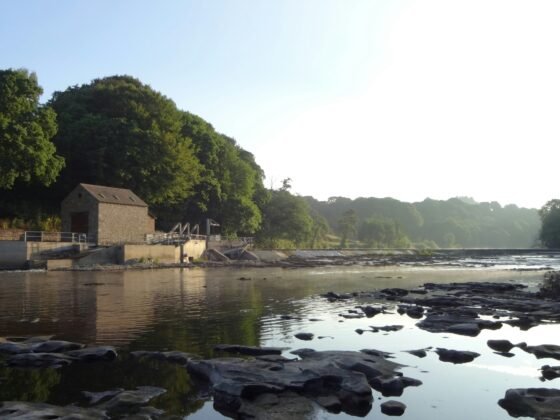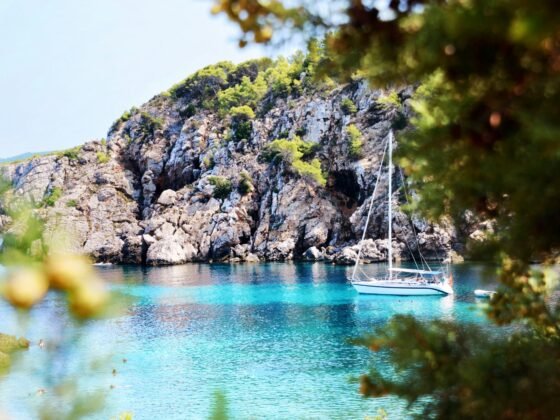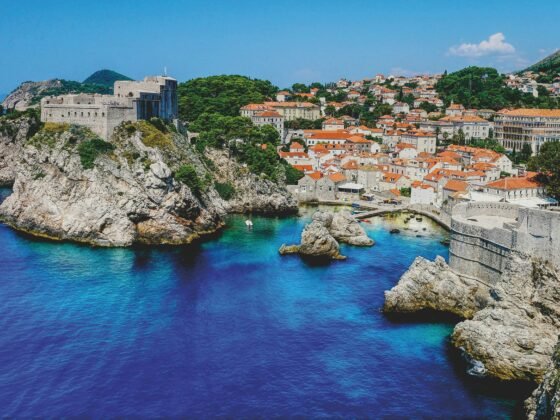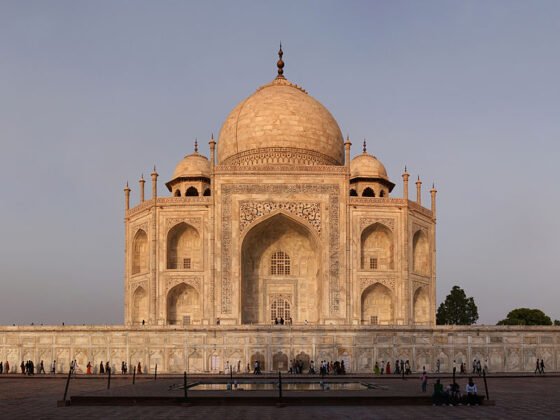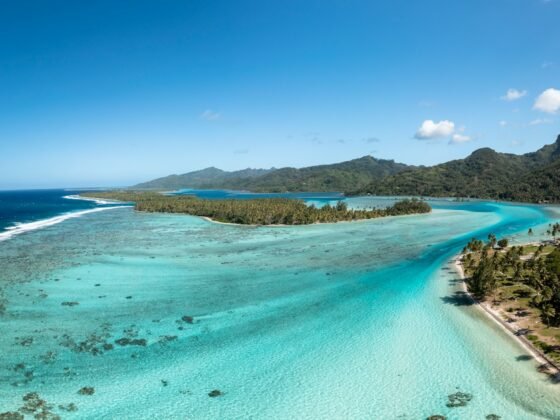Mongolia Adventure Travel Guide: Ideas and Inspiration
PureTravel Says: “Pure and untouched by explorers, Mongolia is the perfect get-away for those seeking to escape daily life. It is surrounded on all sides by land and shares borders with Russia in the north, and China to the south, east and west points of its geography. Mongolia is rich with history that has mixed influences of its neighbors, a remarkable nomadic lifestyle that exists up to this day, and a legacy of a great hero that ruled the country in the past.”
-----------------------------------------------------------
Holiday Highlights
Walking & Trekking – Relatively unexplored and open to possibilities, Mongolia is home to the relatively unexplored trekking spots that offer a close look at Mongolia’s nomads, like the three-country border in the Altai Mountains. The Khentii Mountains in the northern part of the city offer wonderful adventures as well, with its sprawling 1.227 million-hectare area. You can also experience a taste of Mongolia’s natural ecology with the natural reserve in the Khogno Khan Mountains. Enjoy picturesque landscapes with the Eight Lakes region, and stand in awe at the foot of the Erkhet Khairgan Mountain, Mongolia’s highest peak.
Culture & History – Mongolian culture is the perfect mix of intercultural exchanges. From its basic nomadic lifestyle brought about by the Mongols, modern Mongolia contains influences from the various countries and cultures that has visited and touched its land through the years. Typical Asian influences include Chinese and Tibetan Buddhism due to their proximity to the country. In a similar manner, European cultural influences can also be seen and were brought in through Russia in the 20th century. The nomadic lifestyle that has characterized its Mongol ancestors can still be seen and felt today.
Rafting – There are numerous rafting and other water sports opportunities for the modern visitor to Mongolia. You have various choices like the Taimen Rivers in Northern Mongolia and the Orkhon River in Central Mongolia. Anyone who loves whitewater rafting as well as other white water sports will definitely find a paradise in the country of Mongolia.
Adventure – Enjoy a mix of the different adventure activities that you can experience in Mongolia. Choose to trek the mountains, and raft down the rivers of Mongolia. Explore the Gobi Desert where the warriors of Genghis Khan thundered through with their horses. Take the chance to let your blood rush while learning about cultures at the same time. Whatever adventure you choose, whatever thrill you seek, Mongolia has it all for you.
-----------------------------------------------------------
When to Go
Mongolia is best experienced from the months of May until August. This is a time of festivals, like the Naadam Holidays in July and a good time to experience the culture of Mongolia at its finest. August has the best weather suited for traveling and trekking, and the best for water sports like whitewater rafting and canoeing.
The best time for people visiting for educational purposes will be from November until the Lunar New Year, when the nomads that inhabit the land of Mongolia will display their cultural and traditional practices. You have the chance to see a number of celebrations by the nomads that they have been practicing for countless generations before ours.
-----------------------------------------------------------
Top Tips
-Be sensitive of local culture. Gifts, for example, are considered important and it is offensive to refuse anything that is offered to you.
-Everything offered is received with the right hand, with the palm facing up.
-Be aware of and do not touch nomadic dogs.
-Ensure you have all of the latest information prior to traveling and carry out some research with the Mongolian Ministry of Tourism.
-----------------------------------------------------------
Holidays in Focus
-----------------------------------------------------------
Walking and Trekking
One of the ideal spots to trek in Mongolia is the Altai Mountain Range. The Altai Mountain Range is an opportunity to learn about the different ethnic cultures residing in the Mongolian country as you can find groups as that Kazakhs, Tuvas, Torguuds as well as many small groups. Each of these groups has its own distinct traditions and way of life that you can experience and learn about while traveling the majestic Altai Mountain Range. Get the chance to witness traditional nomadic customs such as the noted Golden Eagle hunting by the Kazakh Muslims, among others.
Aside from ethnic groups, you have the chance to spot the Snow Leopard which is in danger of extinction. The trek takes you across the Tavan Bogd – which in Mongolia means “Five Holy Peaks” – which is where the Snow Leopard as well as other endangered species like the Argali and Ibex live. The Five Holy Peaks also exhibit a barren landscape because of the extreme climate in the area that gives rise to little or no vegetation at all.
If you long for a taste of Mongolian history, then you can try and experience the educational trek to Eastern Mongolia. This trek, which starts in the picturesque Gun-Galuut Nature Reserve, terminates right at the Khoodoo Aral where you can see the monument dedicated to Chinggis Khan. It is said that the historical book “Secret History of the Mongols,” which documented the life of Chinggis Khan and his warriors, was completed here. The Khoodoo Aral also shows you the different symbols and brands that represented the nearly 300 nomadic clans that lived in Mongolia during Genghis Khan’s time.
Riding on horseback, you can spot several different animals in the Gun-Galuut reserve. A perfect place for animal photography, get the chance to see different species of animals like the wild mountain sheep, the white-napped crane and the whooper swan, among others. These animals are endangered and a pleasure if sighted.
This Eastern Mongolian trek will also take you to the shores of the Avarga Toson Lake, where the holiday and resort spa Avarga Toson is situated. Experience the reportedly curative properties of the small lakes behind the resort or simply relax and enjoy the view.
Of course, you can always travel the Gobi Desert, known for its rich wildlife that somehow contrasts its desolate appearance. Many species of animal that can be found here can only be found in Mongolia and no other country in the world. One of this is the Bactrian camel, or the two-humped camel. The desert has also been the site of many dinosaur excavations in the past.
-----------------------------------------------------------
Culture and History
The important part of Mongolia’s history starts with the introduction of iron weapons during the 3rd century BCE. Mongolia was then inhabited by nomadic tribes, the largest of which would form confederations, which began to become problematic for wealthy neighbors such as China. Before the Mongols – the most powerful and historically important of these confederations arrived. There have been six periods in pre-Mongol history staring with the Xiongnu (3rd century BCE – 93 BCE), Xianbei (1st century BCE – 386 AD), Joujan (402 AD – 555 AD), Turkic (555 AD – 745 AD), Uyghur (745 AD – 840 AD) and Khitan (911 AD – 1125 AD) periods.
The confederation of nomads called the Mongol rose to prominence in the 8th century. The confederation started forming into statehood called the Hamug Monggol in the early 12th century. Genghis Khan was the fourth Khan or leader of the Hamug Monggol, and was the son of Yesugei Bagatur who was assassinated in 1171 by the Tatars, another confederation of nomadic tribes in Mongolia.
Genghis Khan was then known as Temujin and was not spared from political crisis when Targudai Kiriltug took away his father’s subjects. However, Temujin soon started a conquest that would ultimately unite all the Mongolian tribes and federations starting with the Merkit confederation in 1189, the Taichuud and Jurhin tribes in 1201, the Tatars in 1202 and many others. By 1206, Temujin had united all tribes of Mongolia and was awarded the title ‘Genghis Khan.’
Genghis Khan was not only known for uniting the Mongolian tribes as one, but for the different conquests he took to strengthen the new nation that he had founded. One of these was its war with the Khwarezmid Empire as a response to the slaughtering of 450 envoys and tradesman that he sent to the Khwarezmid Shah in 1218.
The Mongolian warriors at this point reached up to the grasslands of the northern part of the Black Sea in Europe. The Mongol army also subjugated the Tangut state in 1226 after it refused to take part in the Western-bound conquests of Genghis Khan. After 16 years, the Mongol Empire was founded.
Today, Genghis Khan is regarded as a hero in Mongolia. He left behind a superior law code and a written language. All of these are a source of historical pride for current-day Mongolians.
-----------------------------------------------------------
Adventure
With all the opportunities offered by Mongolia to the daring adventurer, it is only a matter of combining the many different treks and rafting options to come up with the best adventure package. Go on a trek on horseback on the Gun-Galuut Nature Reserve, and mount a two-humped camel for the adventure across the Gobi Desert with all of its endemic animal life that you won’t find anywhere else. Virtually unexplored, Mongolia is a myriad of journeys that you will never forget.
-----------------------------------------------------------
Classic Itineraries
- Visiting the capital of Ulan Bator
- Trekking the Gobi Desert
- Paying homage to the old capital of Genghis Khan’s empire
- Participating in the Naadam Festival in July
-----------------------------------------------------------
Public Holidays, Festivals and Events
1 January - New Year's Day (western observation)
13 January - Constitution Day
February - Lunar New Year, aka Tsagaan Sar which means White Moon
1 March - Patriot's Day
8 March - International Women's Day
18 March - Soldier's Day
7 April - Health Day
26 April - Intellectual Property Day
15 May - Family Day
1 June - Mothers' and Children's Day
10 July - Political Flag Day
11 July - Naadam Holiday
25 August - Youth's Day
10 September - Repression Victim's Day
September - Environment Safety Day
Sept/Oct - New Harvest Days
1 October - Elders' Day
29 October - Capital City Day
14 November - Genghis Khan's birthday
26 November - Republic's Day
10 December - Human Right's Day
29 December - Independence Day
-----------------------------------------------------------
UNESCO World Heritage Sites
- Uvs Nuur Basin
- Orkhon Valley Cultural Landscape
- Petroglyphic Complexes of the Mongolian Altai
-----------------------------------------------------------
Travel Resources
By Julie Bowman


